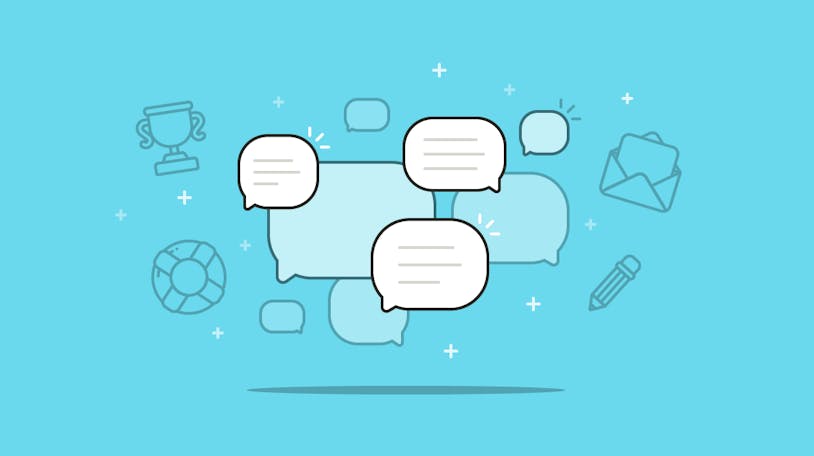Help Desk vs. Service Desk: Which Is Best for You?


Many companies start out offering support and services through a personal email, like Gmail or Hotmail. However, as your company and the number of people you have to service grows, it can be helpful to consider using dedicated software.
If you’ve begun researching options, you may have noticed a couple of different software types, including help desks and service desks. Sometimes people use these terms interchangeably, but there are some specific differences between the two. Having a better understanding of those differences could help streamline your search.
This blog post will look at the differences between a service desk and a help desk, how to identify which one is better for you, and what features to look for during your evaluation.
What is a help desk?
A help desk is the point of contact between a company and its users. Usually, a help desk facilitates incident management and service requests. They also typically handle self-service, reporting, knowledge management, and multichannel functionality.
Companies use their help desk interface to manage all of these features. They can modify and create knowledge base articles, attend to the support and service queues for various channels, and read their reporting all in one place.
What is a service desk?
A service desk is software that assists your team in answering and resolving inquiries — typically in the capacity of an IT team or internal tech support.
Service desks are often limited to managing a single process, such as ticket resolution, bug triage, or incident management. It is the interface that your team uses specifically for direct communication around a specific inquiry.
Service desk vs. help desk: What's the difference?
You'll often hear people use the phrases help desk and service desk interchangeably. However, that's not accurate. The two are pretty different in terms of what they offer to users.
Help desks are more holistic, contain more features, and focus more on customer-centricity than service desks. Service desks, on the other hand, are much more solution-focused since they solely handle incident management.
Service desks, by this definition, are just one of the features offered by help desks. With a help desk, you can expect to get the following features:
Service desk/ticket management functionality
Self-service support
Knowledge base capabilities
Reporting
Multichannel communication
Contact forms
Automation
A service desk is just the top functionality — the ability to resolve and respond to tickets or service requests. Given this, service desks are typically used for internal support for employees and help desks are usually used by whole teams supporting customer bases.
The importance of service desk and help desk tools
As different as the two software are, implementing either a service desk or a help desk is an essential step in the growth of your customer experience strategy. When trying to scale your experience, managing incoming conversations in a personal inbox with more than one person responding can be tricky at best and sloppy at worst.
Beyond that, there are several benefits that service desks and help desks can offer.
Facilitate collaboration
Unlike an individual email inbox like Gmail, a help desk or service desk can facilitate communication between multiple teams. You can leave notes or internal comments and can assign conversations to specific people to make it easier for everyone to work together to get to a resolution.
Individuals going through training or looking for similar resolutions to a conversation can search for key terms and go back in history to look at previous internal notes. Having this additional context and paper trail can be the difference between resolving an issue on the first try and needing to bring in another team member to get to a resolution.
Offer self-service
Many people prefer to find answers on their own. Instead of needing to reach out to a support or service team via email, chat, or phone, they'd prefer to find their own information and resolve the problem or answer the question without a wait.
Help desk software allows your team to create knowledge base articles using a built-in editor, host your documentation site, and view reporting on your docs' performance.
Manage processes easily
Both help desks and service desks will help your team put better processes in place and make them easier to manage, like when building out and maintaining contact forms, automation, or signatures for your team members.
Both types of tools improve communication with your customers, but a help desk will add more functionality options than you may find with a service desk. For instance, a help desk will provide documentation and knowledge base management.
Personalize your conversations
With a help desk or service desk, you are more empowered to integrate personalization into your customer interactions. With both tools, you have the option to:
Address customers by name automatically
View communication history
Build auto-replies
Create custom email templates
Update agent signatures
With a help desk specifically, you may also have the option to:
View purchase history
Move customers across communication channels
Integrate with your CRM or other sources of data
Visualize where customers are on the customer journey
Recommend personalized content from your knowledge base
Both can provide significant benefits to creating a more personalized experience for your users and customers.
Does the difference between a service desk and a help desk matter?
Whether you choose a service desk or a help desk should depend on the type of experience you are trying to provide. If a more transactional interaction suffices for your needs, you may be fine using a service desk. If you want to offer something a bit more in-depth as a customer experience, you may focus on evaluating help desks.
Service desks are perfect for internal teams, like IT help desks, or for those providing physical services, like a company that repairs washing machines. They may also be suitable for bug tracking within an engineering or QA organization. They get the job done without many additional bells and whistles. A service desk will allow you to resolve customer issues, which will keep them happy in the immediate moment, but it may not give them support throughout their journey like a help desk with multiple channels and self-service support would. Service desks will be better for quick, one-off inquiries rather than supporting a customer life cycle.
Help desks are great for SaaS companies or companies with products that require a bit more ecosystem for their support experience. For instance, they’re beneficial if you want to have linked documentation or if it's essential to support customers across multiple channels. Implementing a help desk for your team will give you more longevity to provide excellent experiences; if you have higher aspirations for your customer journey than just moving through a ticket queue, choosing a help desk over a service desk will be a better bet.
Consider what kind of experience you want to offer your users as you consider which tool will be best for you.
Best practices for choosing the right tools
Whether you're going for a help desk software or a service desk software, some critical evaluations help assess the right tool for your team. Here are a few things to think about as you move forward.
Know how you want to scale
One essential step in evaluating and choosing the right tool for your team is understanding how you would like to scale your strategy. If you anticipate adding features like self-service or multiple channels, purchasing a help desk may be worth it. If your business model doesn't feel like it will ever necessitate anything other than ticket management or your team does internal support, a service desk is a great way to go.
Understand your complexity
How complex are the processes that your team uses to support your customers? If you have a reasonably complex support structure or are planning on adding complexity in the future, it may be better to invest in a help desk right from the start.
If your service model is relatively straightforward, you may not need the advanced functionality that a help desk offers. A service desk would suffice just fine if your contacts are directly reaching out and don't have a lot of nuance in their requests or if they are also employees at your company. For instance, if you are a washing machine repair company or handle physical repairs or requests, you may not need things like chat support or an integrated documentation site. In those cases, a service desk on its own may be a great fit.
Identify extraneous needs
Are you currently using any extra functionality through a third party that would be useful to bring directly into the software you're using to talk to customers? For instance, do you have an analytics platform to identify conversation patterns, or are you using a different chat help desk? If so, you may be best suited to upgrade to a help desk. Given that they offer a more holistic approach and are designed for teams servicing customers externally, they often offer more channels.
If you don't currently use anything extra and aren't planning on needing to in the future, you can probably stick with a service desk for its simplicity. However, a help desk may be better for you if you're keen to use additional channels for support, want a knowledge base, or need any other bells and whistles.
Assess your budget
How much money do you have in your budget to put forward for a solution to customer responses? The more features that a help desk includes, the more expensive it is likely to be. If you do not have as much of a budget to contribute toward a more holistic solution, looking into a stripped-down help desk or a service desk option may be best for your team.
Count your users
Consider how many employees you expect to use the tool and if they will be from different teams. Different software has varying pricing models and facilitates cross-functional work better (or worse) than others. Depending on how many individuals you need to access the tool and how many need to work cross-functionally, some tools may surpass your budget.
Beyond cost, some service desks may only support a few users, whereas help desks will usually be equipped with more robust management tools.
Identify important integrations
Are there other tools in your business that need to interface with the software you use to help customers? Good examples of this may be your CRM or a product analytics tool. Service desks might not have the most extensive catalog of integrations, whereas many help desks already have built-out integrations with well-known software. Because help desks are well suited to teams that are directly serving customers, they often offer integrations to share data between platforms.
If you do not need a lot of pre-built integrations or a documented API to build your integrations directly, a service desk may be a better fit for you. However, if you have a reasonably in-depth software ecosystem and you like your tools to talk to each other, a help desk may be more your speed.
There's no one correct answer
Whether you use a help desk vs. a service desk is ultimately a question that has a different answer for different businesses. There may even be different solutions for the same company as they grow and scale. Some businesses may be fine for years using just a service desk to support their customers, while others may need a help desk right from the start. Which category do you fit in? We hope this information has helped you figure that out!


